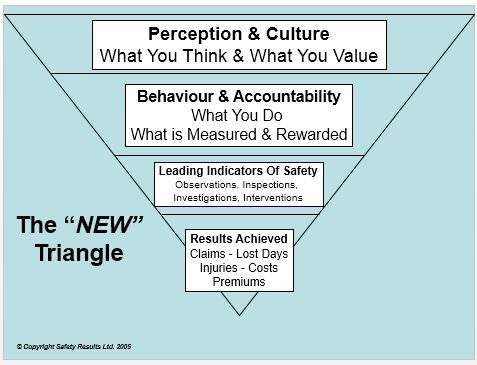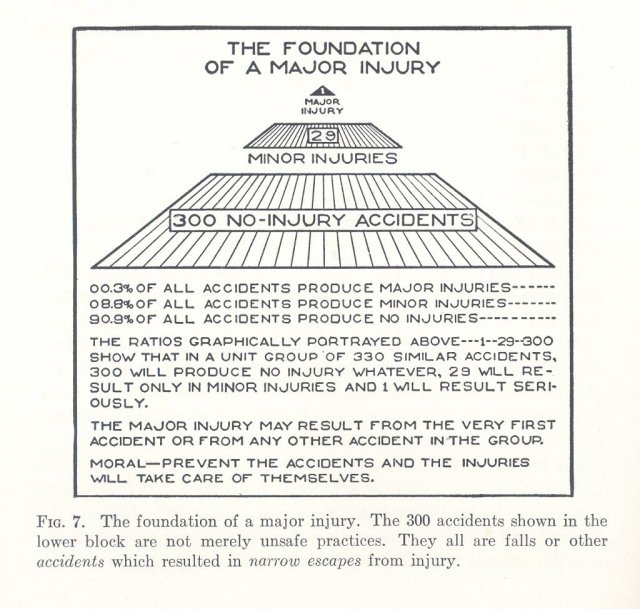Monthly Archives: May 2014
Apparently Reducing Lost Time Claims Doesn’t Create The Same Reduction In Fatal Injuries in CANADA

 There are many “reasons” why the apparent reductions in Lost Time Claims in almost EVERY jurisdiction in Canada is not replicating a similar reduction in Fatalities. Just looking at raw numbers certainly does nothing but make the observer see a correlation in the two separate and very different numbers. Look for yourselves. http://tinyurl.com/m4eft59
There are many “reasons” why the apparent reductions in Lost Time Claims in almost EVERY jurisdiction in Canada is not replicating a similar reduction in Fatalities. Just looking at raw numbers certainly does nothing but make the observer see a correlation in the two separate and very different numbers. Look for yourselves. http://tinyurl.com/m4eft59
A common mistake with amateur “statisticians” is viewing Correlation and attributing a Causation. There is a lot of diligence needed to establish a causation model. Be very careful before making bold statements of causation like have be repeatedly done in these so called “Ratio Studies.” It MAY be true that reducing minor injuries will reduce major injuries of common cause…but these famous and infamous studies didn’t prove that theory. Simple observation of the “ratio” doesn’t prove anything. Real science requires much more diligence and ideally control group data.
Using RAW data in Canada we’re proven that MORE lost time claims results in LESS Fatalities…that makes NO SENSE at all but simple statisticians ignoring the rigor of establishing “causation” demonstration could easily say “SEE WHAT I’VE DISCOVERED! We need to hurt more people in a minor way to save fatal injuries.” This is as ridiculous as saying Heinrich’s observation (and the other studies since) proved ANYTHING!
http://en.wikipedia.org/wiki/Correlation_does_not_imply_causation
https://www.youtube.com/watch?v=8B271L3NtAw
When in doubt just remember the ice cream! It is our professional responsibility!
If you must use a Triangle – Use a Logical One
If you are looking to reduce the need to have a triangle/ratio to explain predictable outcomes due to common causes (classes of events) you MAY want to consider this as an approach:
Some Basics
We know people get injured by energy hitting them OR that their energy needs have not been met (food, water, warmth, oxygen). Should the force of the energy contact them in a way that exceeds their body’s capacity to withstand that energy (because of the strength of the energy or the importance of the body part struck “heart VS finger”) a variety of injuries will be experienced…everything from a minor irritation to the ultimate injury, our death.
THIS is the logical “common causes” of INJURY. There may be others but this fits to explain the “large majority” of injuries experienced by humans.
There are just so many injury/damage causes (energies) we typically have to consider. Again there may be more and if there are, we just need to add them to the list.
• Mechanical Energy
• Electrical Energy
• Chemical Energy
• Kinetic Energy (Moving Objects)
• Potential (Stored) Energy
• Thermal Energy
• Acoustic Energy (Vibration, Noise)
• Radiant Energy
• Atmospheric/Geological/Oceanographic
• Biological Hazards
It is reasonable to assume that the HIGHER the energy the more chance that a human body will be challenged to withstand it without detrimental effects. This is not a solid number but a range of numbers to be considered. For example: a 5 kg weight dropped on your foot could reasonably cause a injury that could result in a variety of injuries up to an including a human death. It becomes a matter of probability. A broken blood vessel in your foot COULD create a blood clot that kills you. Not likely, and we could if we REALLY saw a value in it study this but there would probably be low payback in doing so.
Energy/Barriers Model
Using the Energy/Barriers Model of causation we recognize that there are limited ways to reduce the chances energy will come in contact with us. We can manipulate the energy, pathway or the person or thing we want to protect or put barriers in place between the energy and the path and/or the path and the desired protected thing.
This is Safety Management #101. Now to believe there is some magic “common cause” to all of these random things…and that those things act in some sort of way that could be usefully used to motivate people to stop some particular kind of incident/injury is a real stretch in logic. Treating ALL small energy low impact events as equally important as large energy/large impact events is SILLY and a waste of everyone’s time. While you’re preventing the next paper cut people could be dying from the large energy incident you are NOT addressing.
I would suggest the best we can do is to Control the Energy through an Energy/Barriers model and use Risk Management principles (Risk=Probability X Severity X Exposure) to reduce the risk of injury and damage. No triangle is required. There’s no need to establish some magical common cause or “foundation” for all injuries which attempts to link them in some logical way. THEY ARE NOT! Too many variables to link them all into some theory that will always work.
A bit more about Risk and Energy/Barriers
and of course…
http://www.predictivesolutions.com/safetycary/a-primer-on-risk-management/
Repeat after me “Keep your triangle in your geometry set where it belongs!”
Looking for interesting imperfect humans being optimistic about consequences of their actions?
Making Safety Personal – Guitar Introduction
Belief in something doesn’t mean it’s true NOR does it mean it was caused by your belief.
If you are a guitar player you will recognize the primate’s fingers are in the Maj7 movable chord position. This is a fact. Believing the animal in the picture KNOWS that it is a guitar chord position is probably impossible to prove. You could have the “opinion” that there is knowledge making it happen. There is an overwhelming large chance that you would be wrong.
Proving something is true is much more difficult than just believing it!
Please OH Please STOP Producing Statistics like you know what you are doing if you DON’T KNOW WHAT THIS IS!!!!!!!!!!!!!!!!!
Careful What You Believe…
Sorry It’s WRONG to superimpose Heinrich’s observation with little or no VALID research to support the conclusions
Myths of Safety Further Explored!
Just Spoke at the Orlando ASSE Chapter yesterday. Great Group of folks working hard to make life safe for others…Here’s the slide deck!





